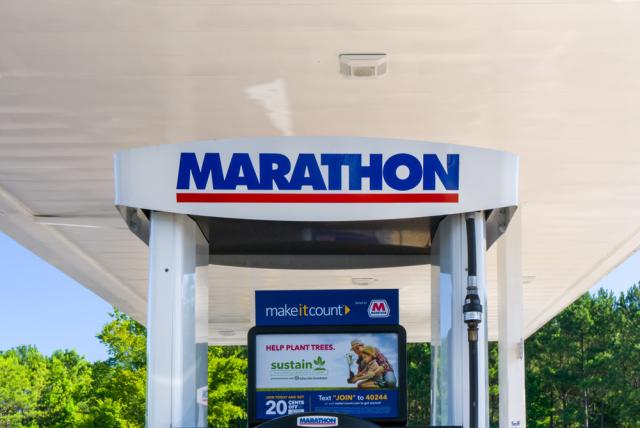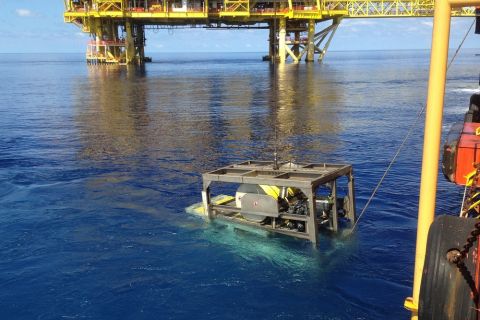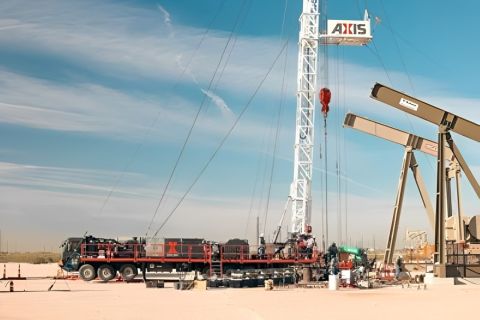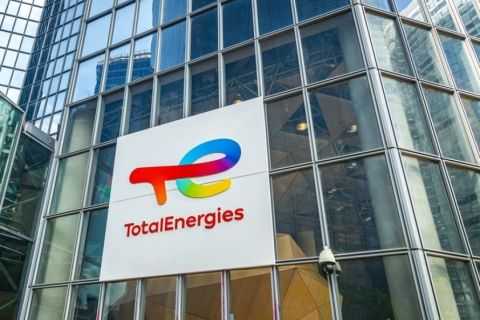
Marathon Petroleum reported a consolidated $16 billion from operating activities for 2022. (Source: Shutterstock)
Marathon Petroleum Corp. reported a consolidated $16 billion from operating activities for 2022, $13 billion excluding MPLX earnings, CEO and president Mike Hennigan announced during a fourth-quarter earnings call on Jan. 31.
“As we look back at 2022, we’ve delivered on our strategic commitments,” said Hennigan, adding that the company’s “commitment to safe and reliable operations” resulted in a refining utilization of 96% and 98% full year capture despite a volatile products market.
Additionally, the company sustained a previously achieved $1.5 billion of structural cost reduction throughout 2022, and a strategic partnership with refiner Neste is forecasted to enhance the economics of its Martinez Renewables fuels project and “create a platform for additional collaboration within renewables.”
Marathon’s midstream business grew 7%, with MPLX—a master limited partnership formed in 2012 by Marathon to own, operate, develop and acquire midstream energy infrastructure assets—raising its distribution by 10%. The company expects to receive $2 billion in annual distributions.
“MPLX remains a source of durable earnings in the Marathon portfolio,” Hennigan said.
The company expects as MPLX grows its free cash flow, it will continue to increase its capital return to unit holders. Marathon returned nearly $12 billion through share repurchases in 2022, bringing their total repurchases to almost $17 billion since May 2021.
It also reported a 30% increase to their dividend, raising to $0.75 per quarter and shareholder returns of 87% in 2022.
“Our outlook remains bullish for ‘23,” Hennigan said. Demand for the transportation fuels Marathon produces remains robust, he continued, with a recovery in demand rising post-pandemic.
Uncertainties regarding the impact of China’s recovery remain, as do the unknowns regarding the impact of a potential U.S. or global recession and Russian sanctions. “But despite these unknowns, we believe that the current supply constraints and growing demand will support strong refining margins in ‘23,” he said.
Headwinds and tailwinds
Adjusted EBITDA from third quarter 2022 to fourth quarter was lower by approximately $1 billion, executive vice president and CFO Maryann Mannen reported. This decrease was driven by refining and marketing, she said, noting that the blended crack spread was down over $5, a reflection of a 20% quarterly decline. Additionally, corporate expenses were higher in the fourth quarter due to retroactive operating tax assessments from prior periods.
“We intend to pursue recovery of these multi-year tax assessments,” Mannen said, noting that special compensation expenses also added to the corporate spending costs, as well as refining, marketing and midstream segments.
“We do not anticipate that these costs will structurally impact future corporate costs,” she said.
Mannen also reported the impact of winter storm Elliott, which occurred at the end of December and primarily affected the company’s Gulf Coast and midcontinent regions. Most of Marathon’s assets were back online after a short period, she said, and there have been no reports of structural issues.
“The crude throughput impact was approximately 4 million barrels, which reduced our crude capacity utilization for the fourth quarter by roughly 2%,” Mannen said. “Looking to January, we anticipate impacts to throughput of 3.5 million barrels which is reflected in our guidance for the first quarter of 2023. Even with a disruption at the end of the quarter, our refining assets ran at 94% utilization, processing 2.7 million barrels of crude per day at our 13 refineries.”
Marathon’s full year refining operating costs increased from $5.03/bbl in 2021 to $5.41/bbl at the end of the fourth quarter, which is entirely attributed to higher energy costs, Mannen said.
“We believe the actions we have taken to reduce our structural operating costs are sustainable,” she said.
Mannen reported that Marathon’s refining and marketing capture for the fourth quarter was 109%. She attributed this to the commercial teams’ effectiveness despite the volatile market, adding that light product margin tailwinds improved secondary product prices and that favorable inventory impacts benefited capture.
Mannen does not expect all of these tailwinds to be repeatable. Particularly, she expects the inventory impacts to reverse in the first quarter.
“We have been committed to improving our commercial performance, and we believe that the capabilities we have built over the last 18 months will provide a sustainable advantage,” Mannen said.
Recommended Reading
TGS, SLB to Conduct Engagement Phase 5 in GoM
2024-02-05 - TGS and SLB’s seventh program within the joint venture involves the acquisition of 157 Outer Continental Shelf blocks.
StimStixx, Hunting Titan Partner on Well Perforation, Acidizing
2024-02-07 - The strategic partnership between StimStixx Technologies and Hunting Titan will increase well treatments and reduce costs, the companies said.
Forum Energy Signs MOU to Develop Electric ROV Thrusters
2024-03-13 - The electric thrusters for ROV systems will undergo extensive tests by Forum Energy Technologies and SAFEEN Survey & Subsea Services.
Axis Energy Deploys Fully Electric Well Service Rig
2024-03-13 - Axis Energy Services’ EPIC RIG has the ability to run on grid power for reduced emissions and increased fuel flexibility.
TotalEnergies Rolling Out Copilot for Microsoft 365
2024-02-27 - TotalEnergies’ rollout is part of the company’s digital transformation and is intended to help employees solve problems more efficiently.





